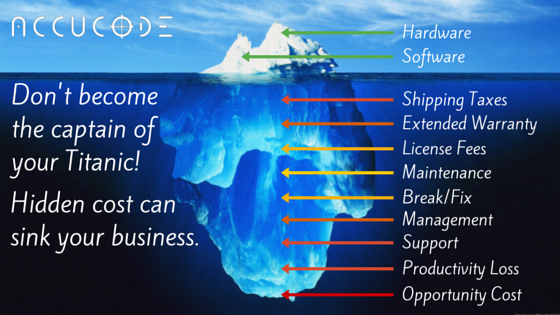 The decision between purchasing a POS system and subscribing to an outcome guaranteed by as-a-Service programs is not as cut and dry as you would think. In the SMB landscape, making this decision can be a very daunting ordeal for a business owner who has never felt the pain of owning business hardware technology. The decision a business makes will ultimately dictate what type of internal infrastructure is needed to support that decision. If a business is purchasing the hardware needed to run their business, they have to invest in the internal resources to support their purchase. There are additional costs associated with supporting a solution above and beyond financing that need to be taken into account. On the other hand, if the business subscribes to an outcome, there is no need to invest heavily in internal resources.
The decision between purchasing a POS system and subscribing to an outcome guaranteed by as-a-Service programs is not as cut and dry as you would think. In the SMB landscape, making this decision can be a very daunting ordeal for a business owner who has never felt the pain of owning business hardware technology. The decision a business makes will ultimately dictate what type of internal infrastructure is needed to support that decision. If a business is purchasing the hardware needed to run their business, they have to invest in the internal resources to support their purchase. There are additional costs associated with supporting a solution above and beyond financing that need to be taken into account. On the other hand, if the business subscribes to an outcome, there is no need to invest heavily in internal resources.
From my experience, what most business owners in the SMB marketplace overlook is the true total cost of ownership of a complete POS system. What is it really going to cost (directly and indirectly) to purchase and maintain the technology they need? When I talk to SMB business owners, 90% of them do not take into account the costs of acquisition, management and support, communications, end user expenses, opportunity cost of downtime, and other productivity losses.
So, what is that cost of ownership? Here’s an easy way to look at it. When someone compliments your new shirt and asks how much it cost, you would probably say $50 because that is the amount that was listed on the price tag. But, really, the cost is much higher when you factor in the indirect costs, such as taxes, the time to shop at multiple stores, fuel, vehicle maintenance, opportunity costs, etc. I know, personally, I rarely take those types of costs into consideration when calculating the total cost of ownership of an item.

For a POS system, there are a number of indirect costs that are rarely taken into account by business owners. One must consider all of the costs associated with running and maintaining a POS system, including:
- Hardware
- Installation and setup fees
- Software subscription fees
- Training
- Downtime or loss of sales in the event of hardware failure
- IT support
- WiFi network connection and maintenance
For a complete list of the total costs of owning business hardware, check out the Typical Tablet Total Cost of Ownership. Check back for our next post discussing the pros and cons of a CapEx purchase and a subscription to an as-a-Service
solution.
 Brandon Grant
Brandon Grant
Director, Business Development & Partnerships
Accucode
Follow on Twitter

